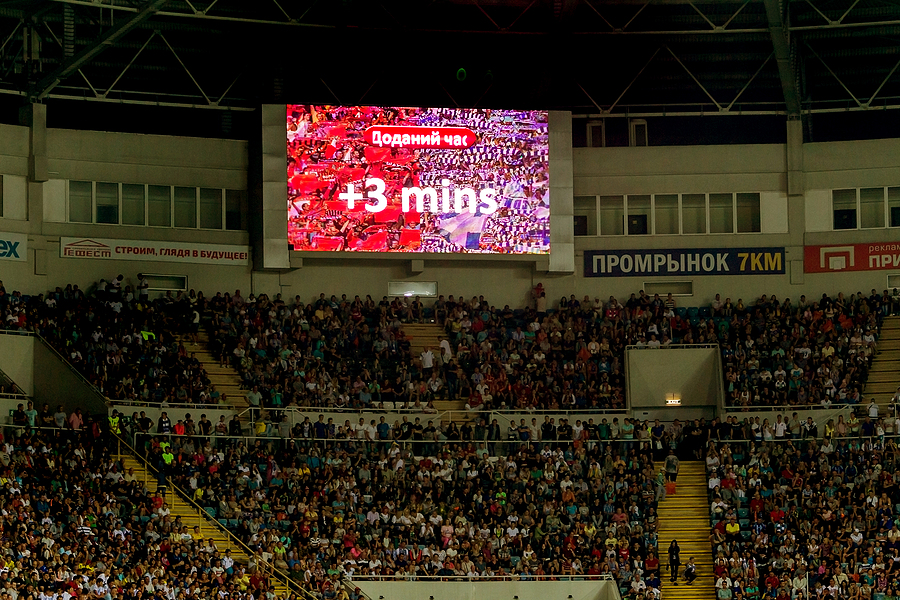Long gone are the days when attending a football match meant relying on loudspeaker announcements or static signage for information. Football stadiums are now saturated with technology from every angle, and not least by the introduction of LED display screens. Here’s a look at how they are transforming football viewing and broadcasting.
Dynamic advertising opportunities
In the high-stakes world of professional football, advertising is king and the days of static advertising billboards are numbered, if not completely obsolete at Premier League stadiums. LED screens allow for a new flexible approach to advertising, with rotating content that is programmed to the audience demographics.
For international matches that are broadcast on live TV during events such as Euro 2024, it is even possible to alter the content of the screens so that viewers across the globe will see the adverts that are most relevant to them. This highly targeted advertising can command premium fees from brands, generating significant revenue for the stadium.
The screens can also be integrated with sponsor-led content and promotions, which provide a significant income stream for football clubs and stadiums.
Enhanced viewing experience
LED screens are not just about advertising; they also play a huge role in the quality of the viewing experience and fan engagement. They can be used to show instant replays on significant moments in the match such as goals, fouls, and controversial refereeing decisions.
This ensures that wherever the fans are in the stadium, they never miss vital pieces of the action. However, screens can go beyond a passive viewing experience and offer interactive methods of engagement, such as polls, quizzes, and social media updates.
Safety and information
The screens are also used to impart information in real time, such as match stats and score lines, and details of upcoming matches and other events. They can also be used to display important announcements such as security alerts, travel information such as traffic conditions, road closures, or rail cancellations, and adverse weather events.
Digital signs can help in crowd control, diverting fans to different entrances and exit points, and directing the flow of foot traffic around the stadium to minimise congestion.
Eco-friendly and sustainability considerations
LED screens are recognised to be much more energy efficient than traditional lighting and display systems, consuming less power and therefore reducing energy costs. This not only translates into cost savings but also lowers the carbon footprint of the stadium, enhancing the club’s commitment to sustainability and eco-friendly values.
LED screens also eliminate the wastage involved in static billboard content, which needs to be torn down and replaced or covered over on a regular basis. In the long run, this equates to significant savings in terms of both time and money.
LED screens are highly durable and can withstand extreme weather conditions. They are designed to be low maintenance and should operate reliably for long periods if they are installed correctly and obtained from a quality trusted supplier.
Technology of the future
As digital technologies continue to evolve at a dizzying pace, we can expect to see many more developments in the future.
Next generation Wi-Fi capabilities mean that we may be able to soon wear 3D or augmented reality glasses that are overlaid with all the information you could ever wish to know, such as footballer names, goals scored, on-target shots, off-target shots…the list is endless.
You may soon be able to personalise which live action replays you see and take part in live polls and discussions during or after the match. It will be possible to do all this while sharing real time updates of your activities on social media and ordering food or booking transport directly to and from the venue.
The technology not only benefits viewers but also helps the venue managers collect valuable data and insights into crowd movements and interactions. This helps them make better informed decisions about the layout of the stadium, the placement of security staff, food and drink outlets, and much more.
From LED screens to virtual reality glasses and next generation WiFi, it seems that the football stadium experience of the future will be about much more than simply turning up in the stands to spectate. The game will be a more immersive experience and stadiums will be safer and more streamlined places to enjoy the beautiful game.
